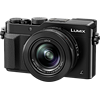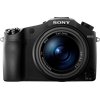Main
Model
Price
Advantages
launch
Announced
Body type
Camera subcategory
Sensor
Effective pixels
Max resolution
Sensor size
Sensor type
Processor
Image ratio w:h
Other resolutions
Sensor photo detectors
Image
ISO
Boosted ISO (minimum)
White balance presets
Custom white balance
Image stabilization
Uncompressed format
JPEG quality levels
Boosted ISO (maximum)
Photography features
Minimum shutter speed
Maximum shutter speed
Maximum shutter speed (electronic)
Aperture priority
Shutter priority
Manual exposure mode
Subject / scene modes
Built-in flash
Flash range
External flash
Flash modes
Continuous drive
Self-timer
Metering modes
Exposure compensation
AE Bracketing
WB Bracketing
Screen / viewfinder
Articulated LCD
Screen size
Screen dots
Touch screen
Screen type
Live view
Viewfinder type
Viewfinder coverage
Viewfinder magnification
Viewfinder resolution
Videography features
Resolutions
File Format
Microphone
Speaker
Optics & Focus
Focal length (equiv.)
Optical zoom
Maximum aperture
Autofocus
Digital zoom
Manual focus
Normal focus range
Macro focus range
Number of focus points
Physical
Weight (inc. batteries)
Dimensions
Environmentally sealed
Battery
Battery details
Battery Life (CIPA)
Storage
Storage types
Connectivity
USB
HDMI
Microphone port
Headphone port
Wireless
Wireless notes
Remote control
Other features
Orientation sensor
Timelapse recording
GPS
Samples
Videos
Summary
The Cyber-shot DSC-RX10 maximum resolution of 5472 x 3648 pixels (20 megapixels) is better than the Panasonic Lumix DMC-LX100 highest resolution of 4112 x 3088 pixels (13 megapixels). The Panasonic Lumix DMC-LX100 has bigger sensor than the Cyber-shot DSC-RX10: Four Thirds (17.3 x 13 mm) versus 1″ (13.2 x 8.8 mm). It is the most important difference between these models as big sensor allows the camera owner to make photos of the more professional quality. The Panasonic Lumix DMC-LX100 has a wider ISO range of 200-25600 than 125-12800 ISO range of the Cyber-shot DSC-RX10. Such ISO numbers allow the camera owner to make better photos in more difficult situations. The Cyber-shot DSC-RX10 offers more number of white balance presets - 9. This option gives the camera owner more control over colour. The Cyber-shot DSC-RX10 offers better 6.6x digital and 8x optical zooms. The Panasonic Lumix DMC-LX100 offers more focus points than the Cyber-shot DSC-RX10: 49 vs 25. More focus points means less risk of losing focus lock during tracking a moving subject.
The Cyber-shot DSC-RX10 is equipped with tilting display that will allow the camera owner to take amazing selfies. The Cyber-shot DSC-RX10 display is better as it has more screen dots 1,228,800 in comparison to 921,000 dots of the Panasonic Lumix DMC-LX100 screen. The higher dot count display is better for reviewing images on your camera. The Panasonic Lumix DMC-LX100 offers better slowest (60 seconds) and highest (1/4000 second) shutter speeds.
The Cyber-shot DSC-RX10 has built-in flash. The Cyber-shot DSC-RX10 is environmentally sealed which means that it will be safe even uncovered if you are out capturing photos in the rain or snow. The Cyber-shot DSC-RX10 battery life is better in compare to the Panasonic Lumix DMC-LX100 battery life. In accordance with CIPA standards the photographer will be able to produce 420 photos with the Cyber-shot DSC-RX10 and only 300 with the Lumix DMC-LX100. The Panasonic Lumix DMC-LX100 weighs 393g that is 420g less than the weight of the Cyber-shot DSC-RX10.
Considering the above differences the Sony Cyber-shot DSC-RX10 becomes the best choice. Get the lowest price on Amazon.


